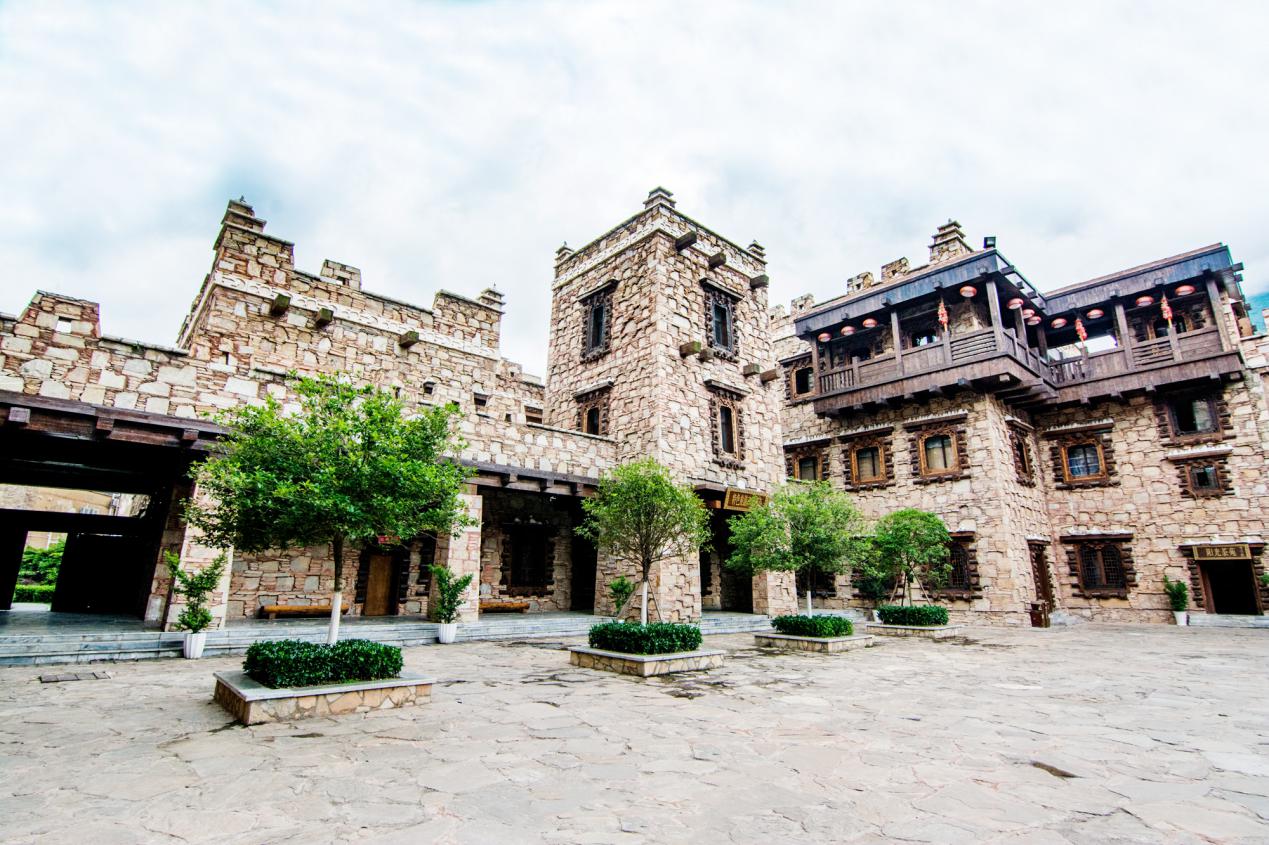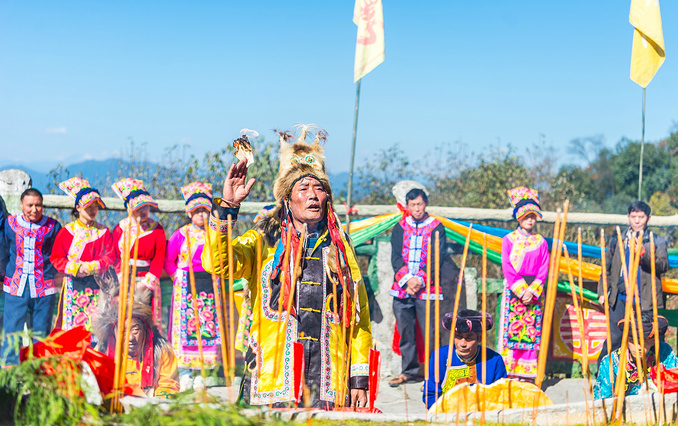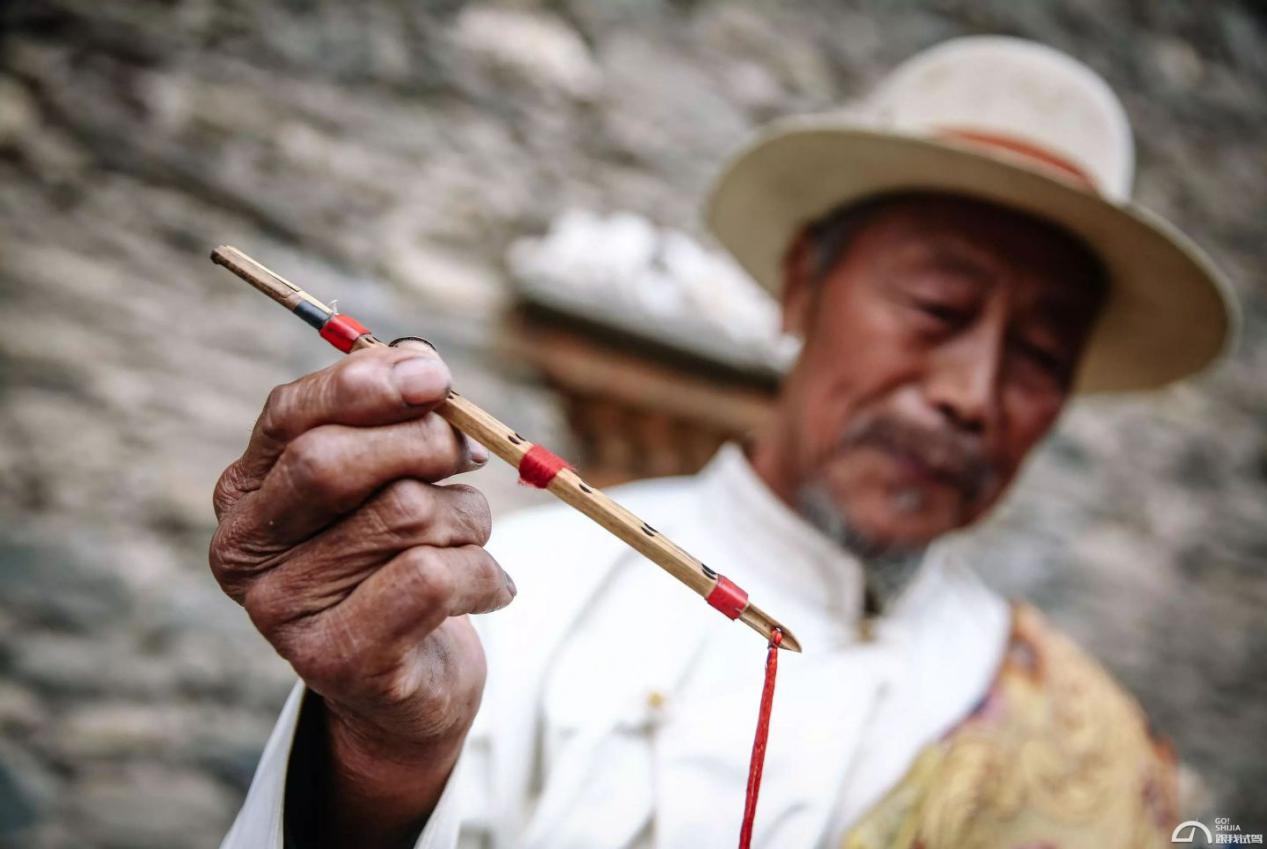

(By Mo Tingting)“Qiang” was a name given by the ancient Han people to the nomadic people in west China. The Qiang people were not a single distinctive ethnic group then. According to historical records, a clan group made their homes in today’s Sichuan Province. The Han Dynasty (202 BC-220 AD) court had set up an administrative prefecture for the area. From the year 600 to 900, when the Tibetan Regime gradually expanded its rule over the region, some Qiangs were assimilated by the Tibetans and others by the Hans, leaving a small number unassimilated. These people developed into the distinctive ethnic group today.
The popularity and importance of watchtowers
The Qiang people live on the upper reaches of the Minjiang River on the east border of Qinghai-Tibet Plateau. Their settlement is covered by stretches of deep mountains and their houses are generally built on the hillsides. Hence, they are named “people living in the clouds”.

Walking through the Min Mountain, we can see watchtowers typical of the Qiang people, which enjoy a long history that can date back as early as 2,000 years ago. They are built by the dwellers for defending the enemy and storing food. With a height of 10 to 30 meters, the watchtowers are made of stones and yellow soil in shapes of quadrangle, hexagonal and octagonal.
It is said that there was once a custom in the Qiang village in the ancient times that when a boy was born, a watchtower must be built by the family. Each year, they would build one storey till the boy became 18 years old. Also, a piece of iron was buried under the watchtower. It would be dug out and forge each year till the coming-of-age ceremony when the piece of iron was made into a sharp knife and given to the boy as a gift. This shows the popularity and importance of watchtowers in the Qiang area.
The process of building watchtowers is amazing. There is no design sketch before the construction. All the work is done relying on experience and skills. These watchtowers are enduring. The Yongping Watchtowers discovered in the Qiang Village of Beichuan County were built in the Ming Dynasty (1368-1644) and are well-preserved till today.

Although many watchtowers in the Qiang area have disappeared with the passing of time, quite a few new watchtowers are built in some places for sightseeing.
The enshrined white quartz stones
The Qiang people believe that all living things have spirits and they worship many kinds of gods, which all take the form of white quartz stone rather than specific status. These white stones are enshrined in the woods, at the entrance of the village, on the roof of houses or by the fireplace. The one on the roof represents the god of heaven and the one by the fireplace represents the god of fire.
The worship for white stone is closely related to the living environment, survival concepts and cultural inheritance of the ancient Qiang people. As the archeological discoveries revealed, the ancestors of the Qiang people mainly live above the snow line. Living in a "world of white", they took a fancy to snow, and thus took white for good and black for evil.
The worship for white evolved into worship for white stones later. As it is recorded in the epic of the Qiang people, a long-lasting war burst out between the Qiang people and the Geji people. With the help of the god of heaven, the Qiang people defeated the Geji people by using snowballs. Later, the snowballs turned into white stones. Thus, they were worshiped by the Qiang people as the incarnation of god, and became an emblem of purity and nobility.

As the Qiang people began to settle down and engaged in farming, white stones are used to make tools such as stone knife and stone axe. During the process of making these tools, they surprisingly found that when two pieces of white stones crash, they produce sparks. This discovery totally changed people's life. So, the worship for white stones also signified the Qiang people's worship for life, making the white stone a synthetical symbol of various gods and a totem of universal significance.
The Qiangs do not have a written script of their own. They speak a language belonging to the Tibetan-Myanmese language family of the Chinese-Tibetan system. Owing to their close contact with the Han people, many Qiang people speak Chinese, which is also the written form for this ethnic group.
One of the ways the Qiang people spreading and inheriting their ethnic culture is through the traditional musical instrument Qiang flutes, which the Qiang people often use to express their happiness, sorrow and all other feelings.
There are a dozen or so age-old flute tune patterns, with a large repertoire covering a wide range of subjects, most of which are expressive of the Qiang people's homesickness and yearning wishes. Popular pieces include Breaking off a Willow Branch, Missing You and Salang's Tune.
Arrow bamboo is the ideal material for making the Qiang flute, due to its straight and long poles, round tubes, even thickness at the head and end, perfect shoots, tough texture and the not-easily-cracked nature. The accuracy in pitch is determined by the length, thickness and size of the pipes. The position of the bamboo reeds, the holes and the distance between the adjacent holes might well test the skills of a flute-making craftsman.

When blowing the Qiang flute, the blower takes a breath using the cheek-bulging technique, which enables a few minutes' playing with one breath. Even a simple tune requires high skills. In addition, throat trills, gliding sounds, two-pipe sounds and the resounding effect of double reeds are combined to make the flute unique. The Qiang’s flute, quite different in terms of its tones, sounds and playing skills, is a rare treasure of China's folk music instruments.
Tips:
Food and Dining: Millet, highland barley, potatoes, winter wheat and buckwheat were the traditional staple food of the Qiang. Wine and smoking of orchid leaves are also popular among some of the Qiang.
Festivals: The Qiang people celebrate their customs and religions by holding various festivals such as the Sacrificial Rite to the Holy Mountain and the Qiang Nian Festival. The Qiang Nian Festival happens on the first of the tenth month of the Chinese calendar year.
Source: China-ASEAN Panorama
桂ICP备14000177号 Copyright@2006-2013 Guangxi China-ASEAN Panorama Magazine Agency Co., Ltd. All Rights Reserved